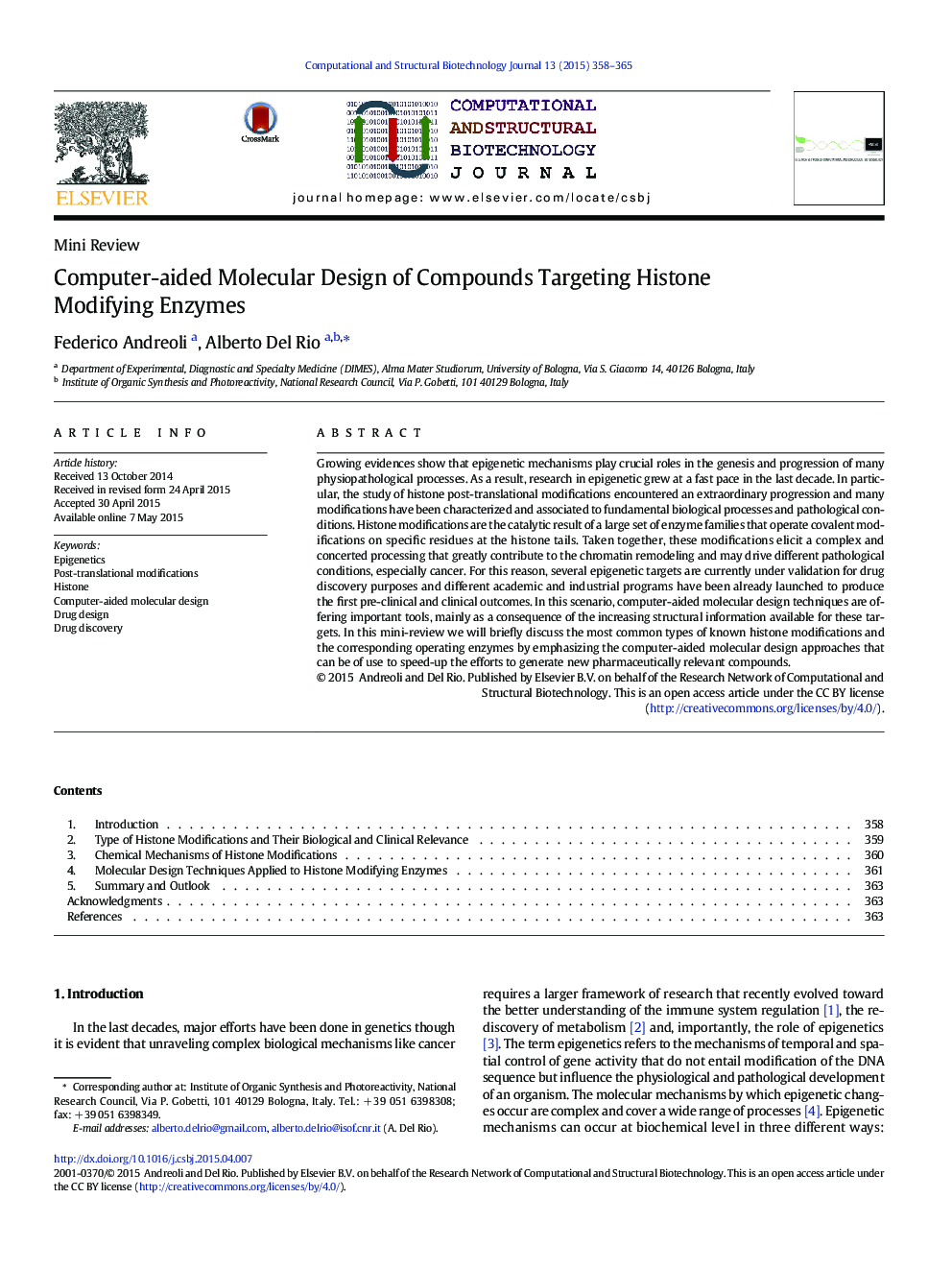| کد مقاله | کد نشریه | سال انتشار | مقاله انگلیسی | نسخه تمام متن |
|---|---|---|---|---|
| 2079185 | 1545072 | 2015 | 8 صفحه PDF | دانلود رایگان |
Growing evidences show that epigenetic mechanisms play crucial roles in the genesis and progression of many physiopathological processes. As a result, research in epigenetic grew at a fast pace in the last decade. In particular, the study of histone post-translational modifications encountered an extraordinary progression and many modifications have been characterized and associated to fundamental biological processes and pathological conditions. Histone modifications are the catalytic result of a large set of enzyme families that operate covalent modifications on specific residues at the histone tails. Taken together, these modifications elicit a complex and concerted processing that greatly contribute to the chromatin remodeling and may drive different pathological conditions, especially cancer. For this reason, several epigenetic targets are currently under validation for drug discovery purposes and different academic and industrial programs have been already launched to produce the first pre-clinical and clinical outcomes. In this scenario, computer-aided molecular design techniques are offering important tools, mainly as a consequence of the increasing structural information available for these targets. In this mini-review we will briefly discuss the most common types of known histone modifications and the corresponding operating enzymes by emphasizing the computer-aided molecular design approaches that can be of use to speed-up the efforts to generate new pharmaceutically relevant compounds.
Journal: Computational and Structural Biotechnology Journal - Volume 13, 2015, Pages 358–365
